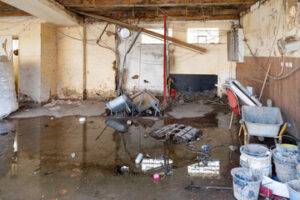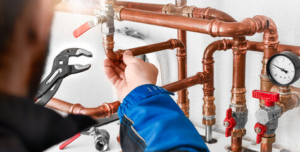Water Damage Los Angeles is one of the most common and costly problems homeowners face. It can occur from various sources and causes, including natural disasters and plumbing issues.

The best way to prevent water damage is to inspect appliances regularly and replace hoses frequently. Other ways to minimize the risk of water damage include ensuring metal tanks are inspected with an ultrasound and addressing structural vulnerabilities.
Water tanks are essential to storing and distributing water in residential, commercial and industrial settings. Although they are made with durable materials, water tanks can still experience damage over time.
The weight of the liquid inside a tank puts stress on the walls and joints, which can lead to leaks and contamination. This is why it’s important to conduct regular inspections of water tanks.
If a water tank is leaking, it’s vital to get the issue fixed as quickly as possible to prevent water damage to your home or business. This is especially true if the water leaks from a small area, such as a fitting or valve.
It’s also a good idea to consider using plastic water tank liners, which help reduce the risk of leaks and other damage. Depending on the type of water tank, these liners can last up to 20 years.
Many types of tanks are available, including fiberglass, steel and concrete. It’s a good idea to consult a professional about which type of tank is right for your property. Choosing the right type of tank can also help reduce the risk of damage caused by environmental factors, such as flooding and ground movement.
In addition to checking for leaks, it’s important to make sure your water tank has a working pressure gauge. A faulty pressure gauge can cause your water tank to overflow. It’s also a good idea to check the inlet and outlet pipes for blockages. If the pipes are blocked, water will not be able to flow in or out of your tank.
Another common issue with water tanks is corrosion. This can occur when water sits in a tank for too long, which can weaken the structure and lead to a collapsed tank. It’s important to clean your water tank regularly and to replace the liner as needed.
Water damage can be expensive and time consuming to fix. To minimize the costs, it’s important to take action as soon as possible. This includes removing any undamaged furniture, boxes and other salvageable items from the affected areas. In addition, you should take photos of the water-damaged areas. This will help your insurance company determine the cost to repair the damage.
Water Supply Line Breaks
The water supply line that leads to your home is an underground network of pipes. This system is designed to withstand heavy loads and extreme temperatures, but over time it can become damaged from normal wear and tear. Fortunately, there are several warning signs that can help you detect a break in your water line. A sudden drop in water pressure in your home, a loss of volume or a high-water bill may indicate that the lines are leaking. You might also notice a wet spot in the yard that never dries or a sound of rushing water in the street.
A broken water line can flood your home with contaminated water that is unsafe for drinking, bathing or washing clothes and dishes. You can prevent this disaster by getting regular maintenance and inspection from a professional plumbing technician. These services will help you identify the parts that are prone to breaking down and perform routine repair to seal them. They will also conduct a water line replacement to ensure that the line works properly and doesn’t leak or burst again in the future.
Water line breaks are a major concern for local authorities because they cause flooding, property damage and traffic congestion. They can also cause sewage and other pollutants to back flow into the water supply, creating a health hazard for residents. According to the CDC, backflow of contaminants into the water supply is one of the most common causes of waterborne disease outbreaks.
While some of the main water line breaks occur due to natural factors, others are caused by human error. Older pipes can develop cracks and corrosion over time, while earthquakes or other ground movement can cause sudden shifts in the soil encasing the piping. Additionally, humans can accidentally damage these lines when using heavy equipment for landscape modifications.
When a water main breaks, it can create a geyser of water that damages the surrounding area. Depending on the severity of the break, it can affect homes and businesses in an entire city or town. When you suspect a water line break, call your utility provider to alert them of the issue. They will dispatch a crew of workers to determine the source and location of the break. The crew will check nearby valves to isolate the broken main and close them to minimize service disruption. The workers will then dig by hand or use heavy machinery to dig a path to the broken water line. In some cases, they will need to contact Missouri 1 Call to locate underground utilities before beginning excavation.
Appliances
If your appliances like dishwashers, washing machines, refrigerators or HVAC systems suffer water damage it can be a big headache for you and your family. You may notice that the appliances don’t work as efficiently and you might start to smell a musty, moldy odor. Water can also cause warped and sagging walls, which is bad for your home’s structural integrity.
Malfunctioning and clogged appliances are common causes of water damage. If you suspect your appliances are leaking, you can test them by feeling the materials they are touching. Newer water damage will have a soft or mushy texture, while older water damage will feel firm. Using electrical outlets when they are wet is dangerous and can lead to a shock or even fire. Outlets that have the potential to come into contact with water (like those in bathrooms and kitchens) should have Ground Fault Circuit Interrupters, which protect against dangerous shocks and electrocution.
Black water damage is the worst of the three types of water damage and it happens when your home’s sewer backs up into your plumbing system. This type of water contains pathogens, such as bacteria and viruses that can make you sick. This type of water needs to be treated immediately by a professional to avoid serious health problems.
Flooding
Flooding can result from many causes, including heavy rains, river and stream overflow, storm surges, and failure of dams, levees, and retention ponds. It can also be caused by fires that burn brush and other vegetation that would normally absorb rainfall. If the flooding is caused by a natural disaster, such as a hurricane or tsunami, the damage can be severe.
When a home or business experiences flooding, it can lead to significant structural damage and mold growth. The severity of the damage depends on how long the water remains in the building and which materials are affected. Water damage should be repaired as soon as possible, as mold can quickly spread throughout a building and cause serious health problems.
In addition to causing mold, the damage from flooding can impact wood, drywall, and carpeting. This can require extensive repairs and replacements, and it can be extremely costly. Flooding can also contaminate the water supply and cause sewage backups, which are very dangerous for human health.
The three categories of water damage (Clean, Gray, and Black) are defined by the IICRC. Class 1 clean water poses no threat to humans, while category 2 gray water can contain contaminants that can make people sick if ingested. Finally, category 3 black water contains pathogens that are harmful and can even cause death if ingested. This type of water is generally the result of severe flooding and must be removed and remediated immediately.
When flooding occurs, it is important to follow local authorities’ instructions and advice. Flood waters can contain pollutants and harmful bacteria, as well as toxins and mold, that are unsafe for humans to touch or breathe. It is also important to move furniture and valuables from areas that may be affected by the flood to higher floors of the building, where they are less likely to get wet.
During a flood, it is also recommended to avoid driving unless absolutely necessary. If a vehicle is driven through standing water, the engine can stall and the car can be swept away. Drivers should also be aware of the risks associated with crossing flowing streams, as they may be swept away by the fast-moving current.

